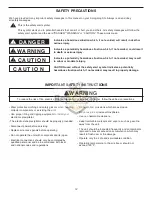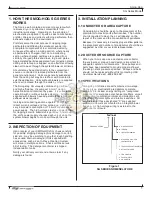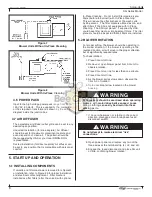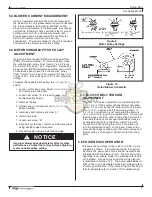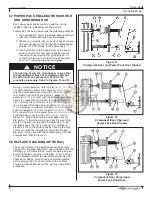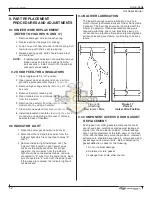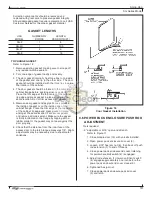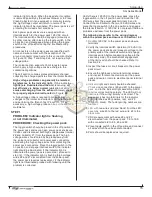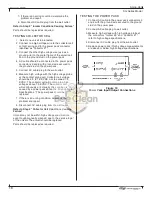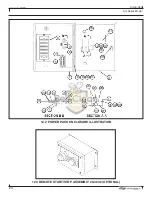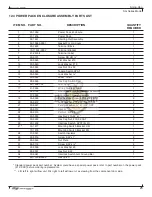
14
revised 09/09
Smog-Hog
SG Series Model
10. TROUBLESHOOTING
the SG unit can consist of one or more modules. each
module represents an independent collection system,
of 2 unicells in series with a power pack enclosure. the
power pack enclosure indicator light is the reference
in determining the module status. the indicator light
illuminated represents a working module, usually within
high voltage specifications. an indicator light flashing or
not illuminated exhibits an abnormal condition.
TOOLS REQUIRED
• Multimeter
• High voltage probe accessory for the multimeter
• High voltage test cables (2), 3’ in length with test clips
at each end
• Basic hand tools
• One power pack (UAS Part Number 21-1216)
• AC cable with three prone plug (for the wall
receptacle), opposing end of cable should have two
connectors for the power pack and a test clip for the
ground wire. the ground wire should be secured to
the ground stud on the power pack.
PERFORM BEFORE TROUBLESHOOTING
the following should be checked to the module(s)
in which the indicator light(s) is flashing or is not
illuminated. corrections should be completed and parts
replaced.
• Toggle switch is in the on position to the power
pack enclosure.
• Check adjustment of the push rod which engages
the interlock switch refer to Section 9.6.
• Proper electrical alignment to the unicell
components. refer to figure 20.
• The proper number of unicells are installed to the
module.
• Unicell components have a moderate to extreme
contaminant build up, manually clean the unicell
components.
• Ionizer wires and tension springs missing or
broken, remove broken wires and springs from the
drain sump.
• Ionizer standoff insulators, cell triangular
insulators, and or door feed through insulators
display moderate to extreme contaminant build
up, broken or carbon tracked insulators (imbedded
black streak which cannot be removed by
cleaning, replace insulator).
10.1 TROUBLESHOOTING PROCEDURE
caution
Risk of electrical shock. The high voltage circuits
to the ionizer and collector should be grounded
before removing the power pack, high voltage
wires, door feed through insulators and unicell(s).
The grounding procedure can be accomplished
by waiting one minute after placing the toggle
switch in off position or by referring to Figures
14 and 15. An internal resistor within the power
pack discharges the residual high voltage. The
grounding procedure statement is not identified
within the troubleshooting steps but should be
performed. The power pack total current output
is limited to a maximum of 5 milliamps to assure
personnel safety.
Power pack enclosure(s) service voltage is
120VAC. This can be lethal. Voltage (120 VAC)
is present within the power pack enclosure
even though the toggle switch is placed in the
off position.
HIGH VOLTAGE SPECIFICATIONS:
ionizer circuit operating range: 10.0 to 11.8 KVDc
collector cell circuit operating range: 5.0 to 7.5 KVDc
there are two factors which will elevate ionizer voltages
above 12.0 KVDc.
1. the ionizer wires are heavily coated with
contaminant (two to three times or greater,
the diameter of the wire). this will decrease
collection efficiency.
2. there are “run away” voltages to the power pack
requiring power pack replacement, above 12.0
KVDc to the ionizer circuit, and 7.5 KVDc to the
collector cell circuit.
there will be continuous cell arcing if cell voltages
exceed 7.5 KVDC. This is also caused by “run away”
voltages to the power pack requiring power pack
replacement. a high voltage measurement can be
performed by removing both the high voltage wires from
the power pack to determine high voltage output or
refer to “testing the Power Pack” in the “Bench testing
Procedure.” the high voltage measurement should not
exceed “High Voltage Specifications.”
if there is a dead short condition or arcing condition
usually the problem is within the collector cell. the
power pack should be confirmed that the power pack
is operational, start with step (1), before proceeding to
the step (2). in the event of a dead short condition the
power pack is designed to “shut down” the high voltage
to the ionizer and collector cell circuits causing the
!
CAUTION
!
WARNING

